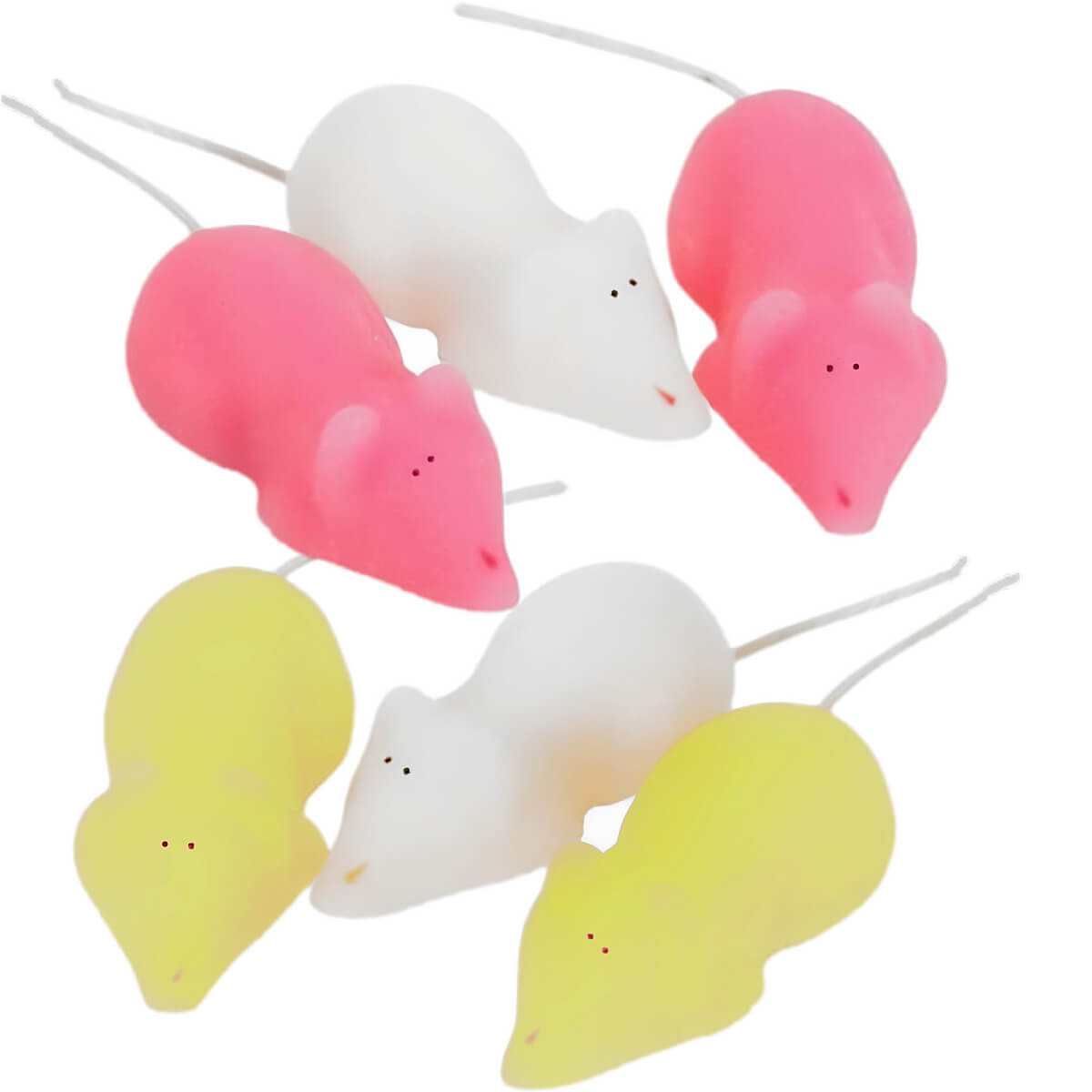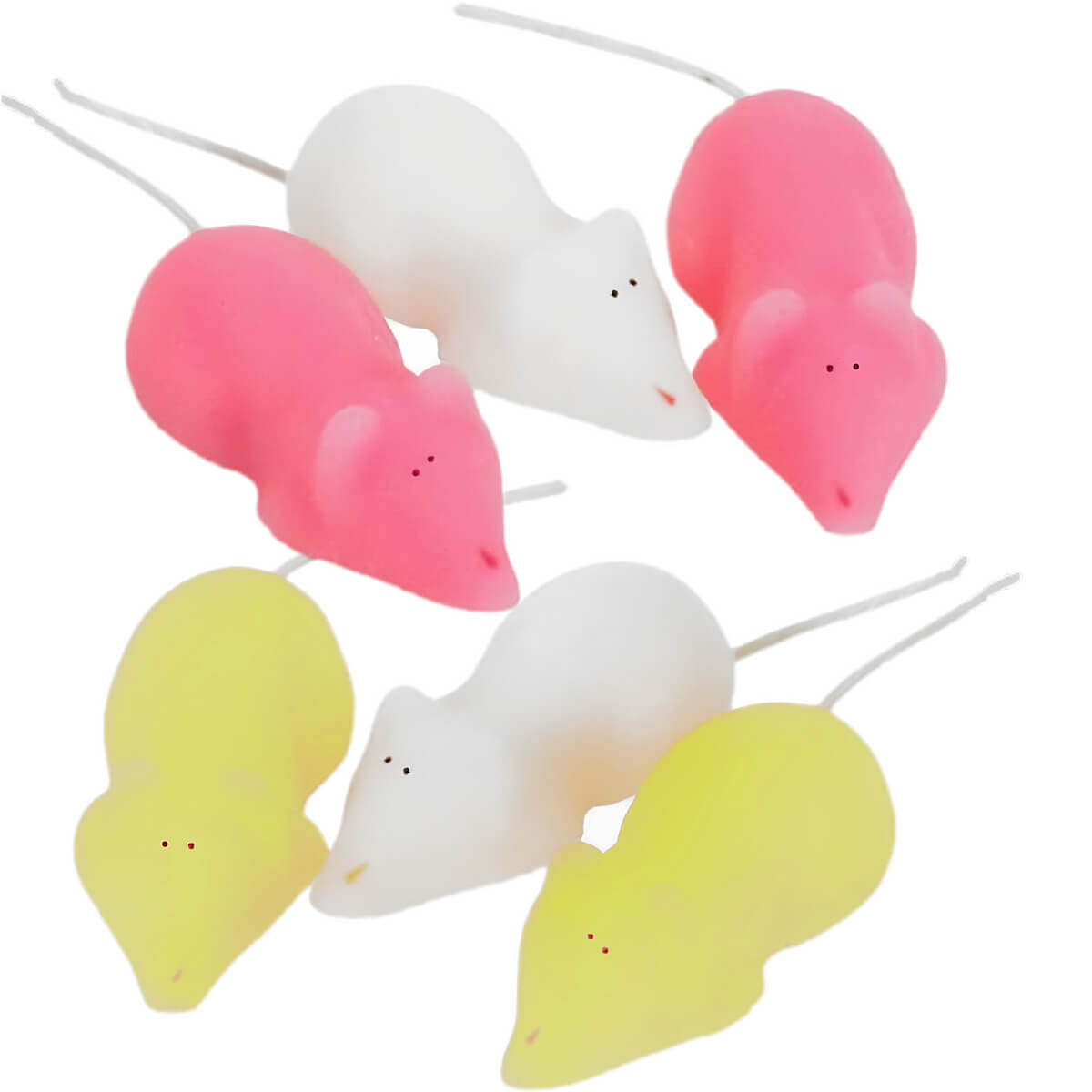Sugar Mice History and Recipe

There will be a great many people of a certain age, who remember receiving Sugar Mice for Christmas as a child. Over the years, sugar mice have transcended their Victorian origins and become enduring symbols of British Christmas tradition. In this post, I'm going to delve into their history and show you how to make Sugar Mice, using a quick and easy recipe.
Although they still have a strong association with the festive period, in modern times, Sugar Mice are often gifted throughout the year.

Disclosure: This page contains affiliate links. As an Amazon associate, I earn from qualifying purchases.
When were Sugar Mice invented?
The exact year is unknown, but it was during the Victorian era that the practice of creating sugar mice emerged as a popular Christmas tradition in Great Britain. Often handmade by Victorian children, these sugary delights served as heartfelt gifts for their parents.
Crafting sugar mice was not merely a culinary pursuit, but also a creative and sentimental endeavour. Victorian children would spend hours moulding and shaping the sugar, infusing each mouse with a personal touch. These miniature masterpieces were then adorned with colourful details, transforming them into festive ornaments for the Christmas tree.
A Symbol of Tradition
The sight of sugar mice nestled among the branches became a symbol of love and care, a testament to the effort and thoughtfulness put into each handmade gift.
In modern times, viewing these handmade treasures on a Christmas tree, taking in their sweet aroma, evokes nostalgic memories of Christmases past, reminding people of their own childhood and much simpler times, and creating a sense of continuity and connection.
In the second half of the 20th century, the art of making your own sugar mice dwindled somewhat, with many people preferring to buy ready-made mice from their local sweet shop or bakery. However, there has been a resurgence in the popularity of crafting homemade sugar mice in the 21st century, and the easiest option is to use a silicone mould.
Some British families continue to embrace the joy of crafting and gifting these sugary delights, passing down the tradition from one generation to the next.
What colours are Sugar Mice?
The most popular colours for Sugar Mice are pink and white. However, they are sometimes bought or made in a mixture of colours, including green, yellow and orange. The mice usually include a white cotton tail, with the eyes and nose marked on with small dots.
What flavours are Sugar Mice?
They are often infused with natural fruit flavours. The pink mice are raspberry, with the white mice flavoured with pineapple. Yellow mice are lemon, The orange ones are orange (as you would expect!) and the green ones are lime.
Chocolate mice are flavoured with white chocolate and strawberry flavours.
What are Sugar Mice made of?
The three main ingredients are sugar, glucose syrup and water. A softening agent such as glycerine is also added. The flavourings and colours are usually natural, making them suitable for vegetarians.
Colourants most often used are carmine, curcumin, paprika and spirulina extracts, and vegetable carbon black.
Modern Variations
While the traditional method of crafting sugar mice remains popular, modern variations have also emerged. Creative bakers and confectioners now experiment with different flavours, colours, and even incorporate various textures to add a contemporary twist to this classic treat.
Some may choose to infuse the sugar with flavours like vanilla or peppermint, while others explore the use of natural food dyes for a vibrant and eye-catching appeal. Pink and white chocolate mice are also a popular alternative.
Make Your Own Sugar Mice (recipe)
Sugar mice are a delightful and nostalgic traditional British treat, especially during the holiday season. They're really pretty simple to make, requiring very few ingredients. Here's a simple recipe to make your own, home-made sugar mice...
Ingredients:
- 1 cup granulated sugar
- 1/3 cup water
- 1/4 teaspoon cream of tartar
- 1/2 teaspoon vanilla extract
- Slivered almonds or chocolate sprinkles for tails
- Food colouring (optional)
- Small decorative items for eyes (e.g., mini chocolate chips)
Instructions:
- Prepare a baking sheet: Line a baking sheet with parchment paper or a silicone baking mat.
- Combine sugar, water, and cream of tartar: In a small saucepan, combine the granulated sugar, water, and cream of tartar. Heat over medium heat, stirring constantly, until the sugar dissolves.
- Bring to a boil: Once the sugar has dissolved, stop stirring and allow the mixture to come to a boil. Use a candy thermometer to monitor the temperature. Cook the sugar syrup until it reaches the soft-ball stage, which is around 240°F (116°C).
- Cool the sugar mixture: Remove the saucepan from the heat and let the sugar mixture cool for a couple of minutes. Add the vanilla extract and, if desired, a few drops of food colouring. Stir gently to incorporate.
- Shape the sugar mice: With clean hands, take small portions of the sugar mixture and shape them into oval or mouse-shaped figures. Place them on the prepared baking sheet, leaving enough space between each mouse. Alternatively, place the mixture into a food-safe, non-stick, flexible silicone mould.
- Add tails and eyes: Insert slivered almonds or chocolate sprinkles into the wider end of each sugar mouse to create tails. If you like, add mini chocolate chips or other small decorative items for eyes.
- Let them set: Allow the sugar mice to cool and harden at room temperature. This may take a couple of hours.
- Store: Once the sugar mice are completely set, store them in an airtight container at room temperature.
Regarding the tails, if you use a silicone mould, they usually have a tail indentation built into them.
Enjoy these sweet and whimsical sugar mice! They make for a charming addition to holiday gatherings or as a homemade gift.
We hope you found our article about the Sugar Mice history informative. You may also like our post The Story Behind The Candy Cane